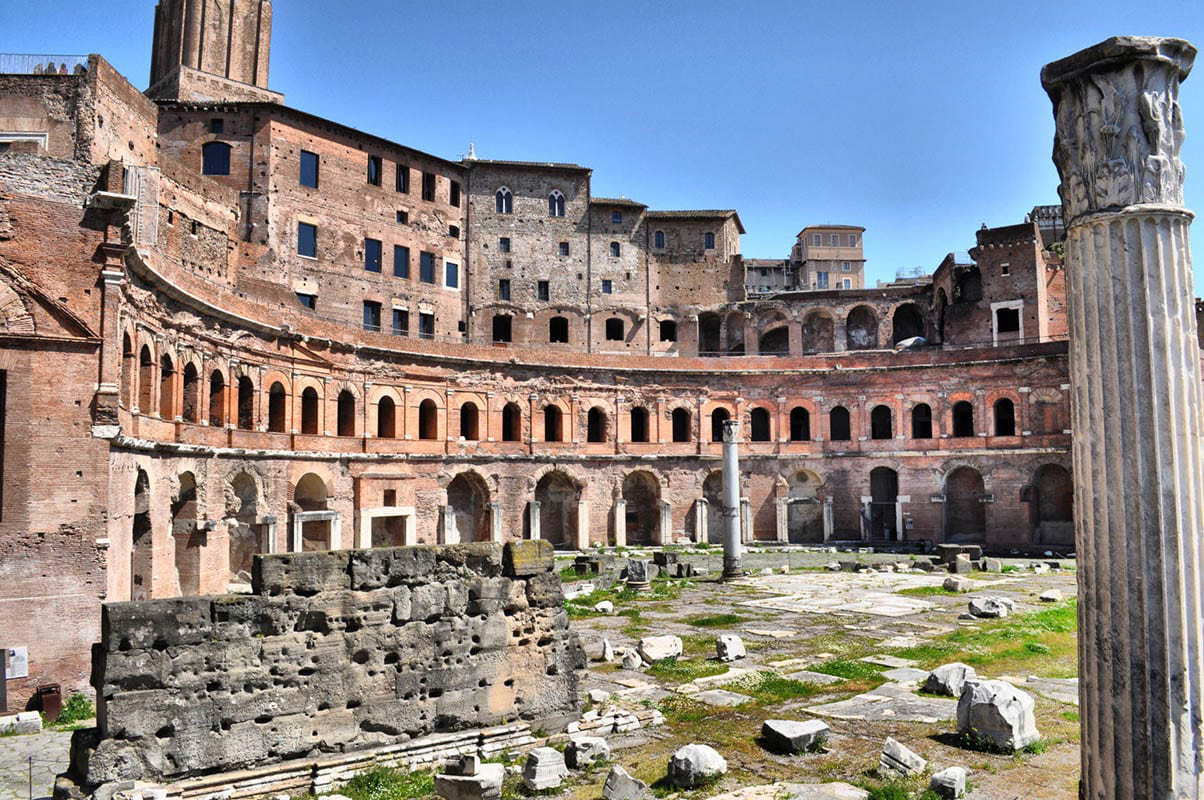
Roman civilization influenced our modern world in many aspects – from culture and language through architecture to political and judicial systems. Many scientists, researchers, and philosophers dedicated their careers to its exploration. These six must-see places in Rome help us connect to the ancient world while teaching us about the life of the Roman Empire and important historical events of that time.
1. The Colosseum

It is impossible to imagine Rome without the Colosseum, an iconic symbol of the ancient Roman Empire. It is the largest amphitheater in the world and one of the most-visited attractions in Rome. This magnificent building was once the setting for gladiatorial battles, celebrations, and various events created to entertain the Romans. The construction of the Colosseum took place under the rulers from the Flavian dynasty, from 72 AD to 80, with some later modifications by Domitian. He was the one to add the upper gallery and the underground system of tunnels, known as hypogeum.
Exploring the Colosseum’s interior or taking a guided tour is the best way to learn much about Ancient Rome. The ruins of the Colosseum are one of the most well-preserved structures in Rome despite its deterioration caused by fires, earthquakes, and robberies. Visiting the Colosseum gives a compelling insight into the culture and historical identity of the Roman Empire.
2. The Pantheon

Get the latest articles delivered to your inbox
Sign up to our Free Weekly NewsletterThe grand structure of the Pantheon is a testament to the impeccable level of engineering and architecture of the Roman Empire. In 126 AD, under the rule of emperor Hadrian, the Pantheon replaced an original structure ruined by fire. The building initially served as a temple dedicated to all the Roman gods. However, multiple resources suggest that the Pantheon was the venue for the public appearances of the emperor and a gathering place for the Roman Senate. In the 7th century, the Pantheon became a Catholic basilica.
The impressive unreinforced concrete dome with an oculus in the center is an architectural marvel that inspired many buildings in Europe and the world. Most of the structure is round, and a beautiful portico at the entrance features a few rows of Corinthian columns. Anyone can visit the Pantheon with a valid ticket and clothing appropriate for the Catholic church.
3. The Roman Forum

The Roman Forum is a little city within the city, consisting of the ruins of the most significant buildings of ancient Rome. It is a site of major significance, allowing visitors to learn about Roman civilization’s social, political, and religious culture. Located near the Colosseum and the Palatine Hill, this large square boasts the ruins of temples, churches, and governmental buildings. The area was the center of the Romans’ daily life and served as a platform for commerce, public speeches, trials and courts, and many other events. Some of the best-known ruins include the Arch of Titus, the Temple of Vesta, and the Curia Julia by Julius Caesar, yet there are many more to explore. It is best to reserve a few hours for sightseeing at the Roman Forum.
4. The Circus Maximus

Currently a public park accessible to anyone who wants to visit, the Circus Maximus was once the largest stadium in ancient Rome. Primarily, it was the venue for a specific entertainment event known as ludi. This annual event included various public games and competitions, but mostly chariot racing. The stadium, built in the 6th century BC, could host around 150 thousand people, anxious and thirsty for entertainment. Today, the city’s guests can see the remains of the oval stadium and a few ruins of what once was a massive entertainment venue.
5. Trajan’s Market

Another must-see site, uncovering the history of ancient Rome and the secrets of its urban life, is the Trajan’s Market. This UNESCO World Heritage Site is part of the former larger complex known as the Trajan’s Forum, consisting of ruins of residential buildings, shops, and a market. It was a multilevel structure connected by staircases and a few entrances available, presenting one of the most exceptional examples of Roman architecture. Today, it is home to the Museum of the Imperial Fora, opened in 2007. The museum features an engaging display of ancient architecture and a collection of various historic items discovered during the excavations.
6. Baths of Diocletian

Bathing was an essential part of Roman society, with spacious public baths and smaller private ones available throughout Rome. People using the baths had different social backgrounds, and it was a meeting place for the nobility and the commoners. The largest public baths were the Baths of Diocletian, built in 306 AD on the commission of the Roman emperor. The baths were able to host up to 3000 visitors. Since 1997, the remains of the Baths have been a part of the National Roman Museum, with an impressive collection of various artifacts found during excavations in the city. There are some fantastic frescoes and sculptures to see, as well as the 16th-century church of Santa Maria degli Angeli, built on the site of the former baths.








